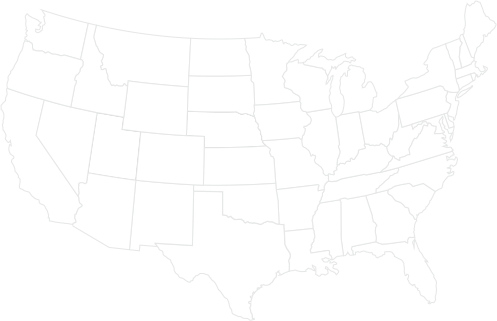Whole Cottonseed’s Journey from Southern Fields to Northern Dairies
• Posted in Articles
Whole cottonseed is considered a valuable dietary supplement for ruminants, especially dairy cows who benefit from the balanced combination of fat, protein and fiber.1 Cottonseed is primarily grown in the South and transported via barge, rail or truck to dairy farms in the Midwest, West and Northeast. The long distance from field to feed often presents logistical challenges.
Barge
One of the most common ways to transport whole cottonseed is by barge up the Mississippi River, making it accessible to many dairies in Iowa, Illinois, Wisconsin and Minnesota.
“The barges are really cheap freight. You can move cottonseed quite a few miles for very little money,” said David Page, a cottonseed merchandiser at Harvey’s Commodities.
“The problem is that there are many touchpoints with barge travel. The product has to be trucked from the gin to the barge terminal, taken in at its destination, warehoused and finally transported to a farm,” Page explained. These multiple touchpoints create opportunities for things to go awry, whether due to staffing shortages, inclimate weather or lock closures.
“It’s a risk/reward scenario,” he said. “Many complications can come up that you can’t foresee. Lot of things can go wrong that really eat up that benefit you’re getting.”
Other obstacles also sometimes impede barge travel, explained Larry Johnson, a cottonseed market expert and owner of Tactical Risk Advisors.
“The challenge with barges is that the river freezes up north, and there are sometimes lock closures by the Army Corps of Engineers. So you don’t always have 100% accessibility in that mode. If you have warehouses by the river, you might not be able to access them by barge for months,” Johnson said.
Rail
Barge travel is not typically an accessible option to dairies that are farther away from the Mississippi River. Page, who primarily supplies to operations in Michigan, Indiana and Ohio, generally transports cottonseed to his customers via rail.
One benefit of rail transport is the increased tonnage per railcar. Cottonseed is notorious for its lack of “flowability” because of the lint on the exterior of the hull. Better ginning practices that extract more of the lint have helped mitigate this issue, but even more importantly, packing methods have improved and railways have introduced gondola cars, which have increased the amount of tonnage that can get transported per shipment, Johnson said. “You used to be able to get 95 tons per railcar, but now with the gons, you can get over 100,” Johnson said.
These increases in tonnage are offset by longer turn times – the amount of time it takes a railcar to get from the gin to its destination and back again – due to labor shortages.
“Two years ago, our turn time was 20 days. Now, it’s 35,” Page said. “As a result, the tonnage a railcar can move today is much lower than it was two years ago.”
These turn times are particularly important when cottonseed has a longer distance to go.
“Anyone who’s running railcars would tell you that it was once normal to get a full turn from the Mid-South region out to California and back within a month,” said Amy May Hopper, a cottonseed trader with The Andersons located out of Kansas City. “And this year during harvest, we were fighting to get two-thirds of a turn in that time. That’s inhibited the amount of seed that the industry has been able to move, and honestly, it hasn’t gotten better.”
Truck
The third way to transport cottonseed from the gin to the farm is by truck, but this method of transportation has been constrained by labor shortages as of late.
“I do have a real fear for the next harvest. What are we going to have left in the ag industry, carrier-wise?” Hopper said, going on to explain that the trucking companies the industry has historically relied on are losing drivers “left and right.”
“What’s our capacity going to look like? How much are we going to be able to move?” Hopper said. “We owe it to our gins to move what we say we’re going to, and we owe it to our dairies to get them what we say we’re going to get them.”
Fuel costs are also a limiting factor when it comes to transporting cottonseed via truck.
“We can put 22 tons of fuzzy cottonseed on a semi truck, but once you start calculating in fuel costs from West Texas to a dairy farm in Wisconsin, that’s where it really becomes cost prohibitive,” said Robert Cossar, a cottonseed product manager at WinField® United.
Risk Reducing Strategies for Dairy Farmers
Whole cottonseed is grown and processed domestically, which may make it more accessible than feed sources produced abroad.
Trent Dado, an independent nutritionist who advises mid- to large-size dairies in Wisconsin and Minnesota, advises farmers to consider whole cottonseed as an alternative to other fat sources, such as palm oil or calcium salt supplements. Supply chain constraints, increased biodiesel costs and labor shortages have increased the cost of these fat sources, particularly palm oil which is produced in Southeast Asia.
Cottonseed has especially been in demand on the West Coast this year. Logistics have been challenging for every feed source, Hopper said, but cottonseed is the easiest to obtain and fits in the ration for many dairies in California, Idaho and the Southwestern states.
“The big thing we’re hearing from Idaho and the Southwest feed pockets is that it’s a great fat. They either can’t get fat, or fat’s priced too high,” Hopper said. “To a degree, cottonseed is being looked at this year by states that import feed, which is almost all those western dairy sheds, because we have a combo of fat, fiber and protein.”
Farmers concerned about the price or availability of whole cottonseed due to transportation costs should work with a reputable reseller. Resellers provide long-term contracts with flat pricing to dairy farmers, which sometimes means that the reseller has to absorb the increased freight cost, Page explained.
“I advise farmers to consider milk prices and look at their margins when making a decision on whether or not to supplement with whole cottonseed,” Dado said. “Right now, milk prices are at historic highs. These historic highs make it worthwhile for dairies to invest in good feedstuffs and potentially increase the quality and quantity of their milk.”2
For a list of reputable resellers in your area, visit the Cottonseed Marketplace.
1 Cranston, J.J., et al. (2006). Effects of feeding whole cottonseed and cottonseed products on performance and carcass characteristics of finishing beef cattle. J.Anim. Sci. 84(8):2186–2199. doi:10.2527/jas.2005-669.
2 Smith, N.E., Collar, L.S., Bath, D.L., Dunkley, W.L., Franke, A.A. (1981). Digestibility and effects of whole cottonseed fed to lactating cows. J. Dairy. Sci. Vol. 64, no. 11, pp. 2209-2215., doi: 10.3168/jds.S0022-0302(81)82831-7.

